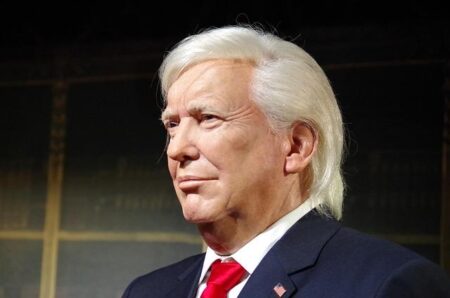Chinese airlines have voiced strong opposition to the United States’ recent proposal to prohibit their flights from using Russian airspace, citing concerns over increased operational costs and flight safety. The US plan, aimed at restricting air routes amid heightened geopolitical tensions, has sparked a diplomatic dispute impacting international aviation logistics. This development underscores the complex intersection of global politics and commercial aviation, as carriers and regulators navigate evolving airspace restrictions.
Chinese Airlines Condemn US Proposal to Ban Flights Over Russian Airspace
Chinese airlines have strongly criticized the recent U.S. proposal to prohibit their commercial flights from traversing Russian airspace, labeling the move as unjustified and disruptive to international aviation. According to officials and industry experts in China, this restriction not only complicates logistical planning but also threatens to increase fuel consumption and travel time substantially. Airlines argue that the skies over Russia offer the most direct routes between Asia and North America or Europe, and being forced to detour would inflate operational costs and passenger inconvenience.
Industry representatives highlighted several key concerns regarding the proposed ban:
- Economic impact: Increased fuel expenses and longer flight durations could raise ticket prices.
- Safety and efficiency: Alternate routes may pass through less monitored or more congested airspaces.
- Diplomatic tensions: The ban may escalate geopolitical strains, affecting wider aviation cooperation.
| Flight Route | Current Average Duration | Estimated Duration with Ban |
|---|---|---|
| Beijing – New York | 13 hours | 16 hours |
| Shanghai – London | 11 hours | 14 hours |
| Guangzhou – Paris | 12 hours | 15 hours |
Implications for Global Aviation and Geopolitical Tensions Explored
The U.S. proposal to prohibit Chinese airlines from using Russian airspace is set to reverberate across the global aviation industry. Airlines will likely face extended flight routes, translating into increased fuel consumption, longer travel times, and higher operational costs. This disruption may force carriers to recalibrate their schedules and pricing strategies, potentially causing a ripple effect that impacts international passenger demand and cargo logistics. Industry experts warn that sustained restrictions could also accelerate efforts to diversify flight corridors and invest in alternative aviation technologies.
Beyond logistics, the move fuels broader geopolitical tensions between major world powers. Airlines have become inadvertent actors in the ongoing diplomatic standoff, as governments leverage airspace control to assert strategic influence. The unfolding scenario underscores the growing complexity of global aviation governance, where security concerns intersect with economic interests. Key points to consider include:
- Diplomatic Strain: Restrictions could deepen mistrust between Beijing, Washington, and Moscow.
- Economic Repercussions: Raised ticket prices and delayed supply chains may impact global trade.
- Regulatory Challenges: International bodies face pressure to create unified policies amid competing national agendas.
- Strategic Realignments: Airlines may seek partnerships or routes aligning with shifting global alliances.
| Stakeholder | Potential Impact | Strategic Response | ||||||||||||
|---|---|---|---|---|---|---|---|---|---|---|---|---|---|---|
| Chinese Airlines | Route alterations, cost increases |
| Stakeholder |
Potential Impact |
Strategic Response |
| |||||||||
| Chinese Airlines | Route alterations, cost increases | Seek alternative flight paths; renegotiate fuel contracts; adjust pricing | ||||||||||||
| Russian Aviation Authorities | Reduced air traffic revenues | Lobby for diplomatic resolution; promote internal aviation hubs | ||||||||||||
| U.S. and Western Airlines | Increased congestion on alternative routes | Coordinate route scheduling; invest in efficient aircraft | ||||||||||||
| International Regulatory Bodies | Challenge to policy harmonization |
Experts Recommend Collaborative Dialogue to Resolve Airspace DisputesInternational aviation experts stress the importance of open channels of communication between governments and airlines to address the escalating tensions over airspace restrictions. The complex geopolitical environment has heightened the risk of disrupting commercial flight routes, making diplomatic engagement vital for maintaining safety and operational efficiency. Industry leaders call for multilateral talks that include all affected parties, proposing a framework that balances national security concerns with the pragmatic needs of global air travel. Among the proposed solutions is the establishment of a collaborative task force aimed at mediating disputes and fostering transparency. Key recommendations include:
The Way ForwardAs tensions continue to mount over the use of Russian airspace, the dispute between Chinese airlines and U.S. regulators underscores the broader geopolitical complexities impacting global aviation. With both sides expressing firm positions, the resolution remains uncertain, leaving airlines and passengers alike to navigate an increasingly challenging international flight landscape. Further developments will be closely monitored as stakeholders seek a path forward amid the evolving diplomatic environment. |




